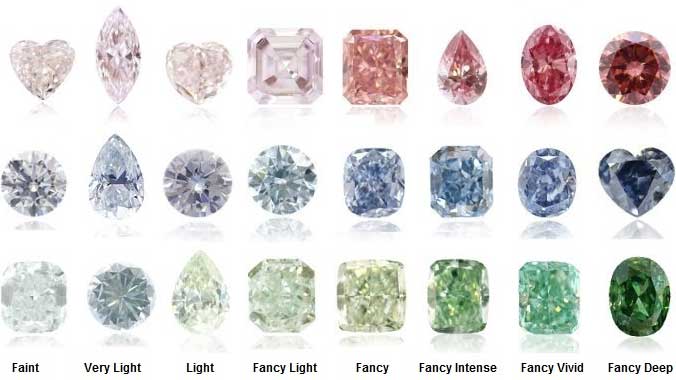Why are some diamonds tinted with colors ?

Colored diamonds: a mystery of nature in the service of beauty
When we usually talk about the color of a diamond, we refer to its lack of color and its beautiful way of tending to the purest colorless white. But diamonds exist in their natural state, in all colors of the light spectrum. This is what is known as a fancy color diamond. Statistically speaking, out of ten thousand diamonds extracted from a mine, only one of them will surprise you by being a natural colored diamond...
In a cut colored diamond, it is the color that is most important and that will determine its quality and price
When buying a colored diamond, you should pay attention to 3 characteristics
- the general hue that the body of the stone gives off (is it yellow, green or red?)
- the tone, i.e. its tendency to be more or less dark (rather light or dark ?)
- the saturation, which is the intensity of this color and whether or not it shows other shades of color. Is the color pure or with nuances?
The more even, vibrant and intense the color, the higher the price and value of the diamond!
As with white diamonds, the GIA has developed a grading system for color, from least desirable to rarest:
Faint - Very Light - Light - Fancy Light - Fancy - Fancy Intense - Fancy Vivid - Fancy Deep. Fancy Vivid, Intense and Deep are generally the most sought after intensities.
Causes of color in diamonds
Below we explain the causes of a naturally (not artificially) colored diamond. A pure diamond is composed only of the chemical element carbon and is colorless. However, diamond crystals sometimes contain trace elements mixed in with the basic chemical formula (C). Not all diamonds are worth their color to the so-called "trace" elements...
Yellow Diamond
Although most so-called "white" diamonds tend to show a slight tinge of yellow or even brown, fancy yellow is the most popular of the colored diamonds.
Diamonds with a color as strong in yellow as the letter Z in the 4C grading system for white diamonds are called yellow diamonds.
The presence of nitrogen atoms in clusters is the cause of this color.
Orange diamond
Structural irregularities during the growth of the rough and the presence of nitrogen in isolated atoms give an orange diamond.
Green diamond
The perfect structure of carbon is sometimes found with vacant areas caused by natural irradiation, we obtain a green color.
Brown Diamond (or Brown)
Brown diamonds are often the least sought after, it is an internal plastic deformation that causes the color.
Pink and Red Diamond
A gap in the crystal structure and the presence of inclusions will create the very rare red, pinkish colors.
Blue Diamond
A cocktail of boron and hydrogen atoms is the magic formula to obtain the much sought after blue diamond.
Purple and grey diamond
It is mainly the presence of hydrogen that will give in the gray.
International research is still looking into the cause of color in the purples ...
Black diamond
It is in fact a white diamond whose black color is caused by the presence of numerous dark inclusions equally distributed throughout the stone.
Discover the most famous colored diamonds in history!
To request a price quote for colored diamonds, please contact us via the special request form.